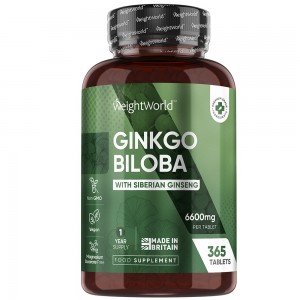
WeightWorld
What Causes Poor Circulation in Feet?: Know It All Here!
10 Min. Read 15 Dec 2025
On this page
Poor circulation in the feet can be more than just a nuisance; it’s a condition that can affect your overall health and well-being. If you’ve ever felt numbness, coldness, or any tingling sensation in your feet, you may be experiencing signs of poor circulation. But what causes poor circulation in feet, and how can you tackle this issue?
In this article, we'll dive deep into the causes of poor blood circulation in toes, common circulation problems in feet, and ways to boost your circulation.
Why You Need Good Blood Flow
Good blood flow is essential for maintaining optimal health and overall well-being. In your quest to learn how to improve blood circulation in feet, you must first understand that proper circulation ensures that oxygen and nutrients are efficiently delivered to every cell in your body while removing waste products. This process is particularly crucial for your feet, which are constantly in use and can easily suffer from circulation issues.
Here’s why maintaining healthy blood flow is so important:
Nutrient and Oxygen Delivery
Blood is responsible for transporting oxygen and essential nutrients to the cells in your feet. Without adequate blood flow, your cells can become deprived of these vital elements, leading to potential damage, dysfunction and poor circulation in feet and arms.
Waste Removal
Proper circulation helps to remove metabolic waste products from your cells. If blood flow is restricted, waste products can accumulate, leading to inflammation, pain, potential tissue damage, and circulation problems in feet.
Temperature Regulation
Blood flow plays a critical role in regulating body temperature. In the feet, good circulation helps maintain a normal temperature, preventing them from feeling excessively cold or experiencing abnormal temperature fluctuations.
Tissue Health and Healing
Efficient blood flow is essential for the repair and regeneration of tissues. If circulation is compromised, it can slow down the healing process of injuries, cuts, or abrasions on your feet, making them more susceptible to infections and complications.
Pain and Discomfort Prevention
Proper blood flow helps prevent conditions that cause pain and discomfort in the feet. For instance, circulation problems in feet can lead to cramping, tingling, or numbness, all of which can interfere with daily activities and quality of life.
Prevention of Serious Health Conditions
Chronic poor circulation can contribute to the development of serious health conditions, such as peripheral artery disease (PAD), diabetic neuropathy, and even cardiovascular issues. Maintaining good circulation can help mitigate these risks and support overall cardiovascular health.
Enhanced Mobility and Function
Good circulation supports the function of the muscles and joints in your feet, enhancing your ability to move comfortably and efficiently. This is particularly important for maintaining an active lifestyle and preventing mobility issues.
By ensuring proper blood flow to your feet, you support overall health and well-being, allowing your feet to function optimally and reducing the risk of complications arising from circulation problems in feet. Taking steps to improve and maintain circulation can lead to significant improvements in comfort, mobility, and overall quality of life.
Signs of Poor Circulation
Recognising the signs of poor circulation in feet is the first step towards addressing the problem. Common symptoms include:
- Numbness or Tingling: A frequent sensation of pins and needles in the feet.
- Cold Feet: Persistent coldness in the extremities, even in a warm environment.
- Swelling: Unexplained puffiness in the ankles or feet.
- Colour Changes: Discolouration of the skin, such as a bluish or pale tint.
- Cramping: Pain or cramping in the feet and legs, especially during exercise.
If you’re experiencing any of these symptoms, it might indicate you have poor circulation in feet, warranting further investigation.
What Causes Poor Circulation in Feet?
Understanding what causes a lack of blood circulation in the feet is key to finding effective solutions. Several factors can contribute to circulation problems in feet, like:
- Peripheral Artery Disease (PAD): A condition where arteries are narrowed, reducing blood flow to the extremities.
- Diabetes: High blood sugar levels can damage blood vessels and nerves, leading to poor circulation in feet.
- Smoking: Tobacco use damages blood vessels and brings about poor circulation in toes.
- High Blood Pressure: Elevated blood pressure can cause damage to blood vessels, causing circulation problems in feet.
- Obesity: Excess weight can strain the circulatory system and impair blood flow.
- Sedentary Lifestyle: Lack of physical activity can lead to weakened muscles and poor circulation in feet.
By identifying these underlying causes, you can take targeted steps to improve circulation and overall health.
Common Causes of Poor Circulation in Feet
Several common conditions and lifestyle factors contribute to poor circulation in feet. These include:
- Atherosclerosis: A build-up of fatty deposits in the arteries, restricting blood flow.
- Varicose Veins: Enlarged veins that can cause blood pooling and circulation issues.
- Raynaud’s Disease: A condition where blood vessels constrict excessively in response to cold or stress.
- Deep Vein Thrombosis (DVT): Blood clots that can obstruct blood flow in the veins.
Understanding these causes can help manage and improve circulation problems in feet effectively.
How to Improve Blood Circulation in Feet?
Wondering how to increase blood flow to feet? Improving circulation in your feet is essential for maintaining comfort and preventing more serious health issues. Here are several effective strategies to enhance blood flow to your feet:
Exercise Regularly
Engaging in regular physical activity is one of the most effective ways to improve circulation. Exercises such as walking, swimming, and cycling stimulate blood flow throughout the body, including the feet. Try to get a minimum of 30 minutes of moderate exercise on most days of the week. Specific exercises like toe raises, ankle circles, and calf stretches can directly benefit your feet by promoting blood flow and flexibility.
Elevate Your Feet
Raising your feet can assist in reducing swelling and enhancing blood circulation. When resting, try to prop your feet up on a cushion or footstool, ensuring they are elevated above the level of your heart. This position helps return blood to the heart more efficiently, reducing pressure and helping with poor circulation in feet.
Stay Hydrated
Adequate hydration is essential for ensuring healthy blood circulation. Drinking plenty of water helps keep your blood at an optimal viscosity, preventing it from becoming too thick and difficult to circulate, resulting in circulation problems in feet. Strive to drink at least 8 glasses of water daily, and adjust your intake according to your activity level and the climate.
Wear Proper Footwear
Always go for shoes that offer proper support and fit well. Tight or poorly fitting shoes can constrict blood flow and cause discomfort. Instead, opt for footwear with ample toe room and supportive arches to ensure that your feet have the space they need to maintain good circulation.
Avoid Prolonged Sitting or Standing
Staying in one position for too long can affect normal circulation. If your job or daily routine involves long periods of sitting or standing, make a point to take regular breaks. Stand up, stretch, and move around every hour to keep your blood flowing and prevent stiffness.
Massage Your Feet
Gentle foot massages can stimulate blood flow, relieve tension and help prevent circulation problems in feet. Use your fingers or a foot massager to apply gentle pressure and circular motions to your feet. This helps to improve circulation, reduce muscle soreness, and promote relaxation.
Wear Compression Socks
Compression socks provide graduated pressure that helps support blood flow from the feet back to the heart. These socks are particularly beneficial for people who experience swelling or have conditions like varicose veins. Choose a pair with the right level of compression for your needs, and consult a healthcare professional if you’re unsure.
Maintain a Healthy Weight
Excess weight can put additional strain on your circulatory system, affecting blood flow to your feet. Adopting a balanced diet and regular exercise routine can help manage your weight and reduce the risk of circulation problems in your feet. Focus on a diet rich in fruits, vegetables, lean proteins, and whole grains to support overall health.
Limit Alcohol and Caffeine
Excessive consumption of alcohol and caffeine can lead to dehydration and constrict blood vessels, potentially impairing circulation. Moderation is key. So, try to limit your intake of these substances to support healthy blood flow.
Avoid Smoking
Smoking is known to damage blood vessels and reduce circulation. If you smoke, seek support to quit, as stopping smoking can significantly improve your blood flow and overall cardiovascular health.
Use Heat Therapy
Applying heat to your feet can help dilate blood vessels and improve circulation. Use a warm foot bath, heating pad, or warm towel to warm your feet gently. Avoid excessive heat, which can cause burns or skin irritation, and always test the temperature before applying.
By integrating these practices into your daily life, you can significantly improve circulation in your feet, leading to better overall health and comfort. Regular attention to these strategies will help keep your feet feeling great and functioning well.
About Circulation Devices?
Circulation devices can play a valuable role in improving blood flow, especially for individuals experiencing poor circulation in feet. One such device gaining popularity is the circulation vibration device. These devices use vibration therapy to stimulate blood flow and enhance circulation, offering a range of benefits for those struggling with circulation issues.
Here’s why you might consider using a circulation vibration device:
- Stimulates Blood Flow: Circulation vibration devices work by generating vibrations that penetrate deep into the tissues, stimulating the muscles and blood vessels. This helps to increase blood flow to the feet, promoting better circulation and alleviating symptoms such as numbness, tingling, and cold feet.
- Reduces Swelling: The vibrations from these devices can help reduce fluid retention and swelling in the feet by encouraging lymphatic drainage. Regular use can lead to noticeable reductions in swelling and discomfort as well as circulation problems in feet.
- Relieves Muscle Tension: Vibration therapy can help relax tight muscles and reduce soreness. For those with muscle stiffness or pain in their feet, using a circulation vibration device can provide soothing relief and improve overall comfort.
- Convenient Home Therapy: One of the key advantages of circulation vibration devices is the convenience of receiving therapy at home. You can use these devices at your own pace and schedule, without needing to visit a clinic or therapist. This makes it easier to incorporate regular circulation-enhancing practices into your daily routine.
- User-Friendly and Adjustable: Many circulation vibration devices come with adjustable settings, allowing you to customise the intensity and duration of the therapy to suit your preferences and needs. This adaptability ensures that you can find the optimal level of vibration for your comfort and effectiveness.
When considering a circulation vibration device, it’s crucial to choose a reliable product from a reputable brand. Quality devices are more likely to be effective and durable, ensuring you get the best results for your investment. Look for brands with positive reviews, strong warranties, and clear safety certifications to ensure you’re selecting a trusted product.
WeightWorld Foot Circulator
Why Choose It?
With its revolutionary EMS & TENS technology, this fitness device is perfect for stimulating tired muscles.
Our satisfied customers love it and have given this device an outstanding 4.5 out of 5 rating.
According to June B -
“It’s certainly making my legs less achy”
If you’re looking for other efficient devices for effective at-home workout sessions, you can try our Vibration Plate. We also offer a wide range of premium fitness supplements and devices if you wish to take your overall fitness game up a notch.
In short, incorporating a circulation vibration device into your routine can be a highly effective way to manage poor circulation in your feet. By choosing a high-quality device and using it consistently, you can enjoy the benefits of improved blood flow, reduced swelling, and enhanced comfort—all from the convenience of your own home.
Final Say
Poor circulation in feet can lead to various health issues if left unaddressed. By understanding the causes and implementing effective strategies to improve blood flow, you can enhance your overall well-being and prevent further complications. Whether through lifestyle changes, specific exercises, or the use of circulation devices, taking proactive steps can make a significant difference.
FAQs
To address poor circulation in your feet, consider incorporating regular exercise, elevating your feet, staying hydrated, and using compression socks. Additionally, avoiding prolonged sitting or standing can help. If you have persistent symptoms, consult a healthcare professional to explore personalised treatment options and address underlying conditions that may contribute to circulation problems in feet.
Vitamins like Vitamin B12, Vitamin E, and Vitamin C are known to support healthy circulation. Vitamin B12 helps with nerve health, while Vitamin E acts as an antioxidant, and Vitamin C supports blood vessel health. These vitamins can contribute to improving poor blood circulation in toes and overall circulation.
To raise your feet and improve circulation, lie down and place your feet on a pillow or cushion so they are elevated above the level of your heart. This position encourages blood flow back to the heart and can help alleviate poor circulation in feet and reduce swelling.
Medications for poor circulation in feet may include blood thinners, antiplatelet drugs, or medications to manage underlying conditions like diabetes or hypertension. Always consult a healthcare professional for personalised advice on medications and treatment for circulation problems in feet.
While poor circulation itself may not always be "cured," it can often be managed effectively with lifestyle changes, medications, and treatments. Improving circulation in the feet involves addressing underlying conditions, maintaining a healthy lifestyle, and following medical advice to enhance blood flow and reduce symptoms.
Drinks that support blood circulation include water, green tea, and beetroot juice. Green tea contains antioxidants that help improve blood flow, while beetroot juice can enhance circulation due to its high nitrate content. Staying well-hydrated with water is also crucial for maintaining overall circulation health.
A great home remedy for improving blood circulation is regular exercise, such as walking or stretching. Additionally, incorporating warm baths, and massages, and using essential oils like peppermint or ginger can help stimulate blood flow. These practices support how to increase blood flow to feet and overall circulation.
Foods that help increase blood flow include fatty fish (like salmon), nuts, seeds, berries, and leafy greens. These foods are rich in omega-3 fatty acids, antioxidants, and nitrates, which support healthy blood vessels and enhance blood flow, helping with poor blood circulation in toes and overall circulation.
Sources
- https://www.ncbi.nlm.nih.gov/books/NBK430745
- https://www.niddk.nih.gov/search?s=all&q=Peripheral+Artery+Disease+and+Circulation
- https://sanguina.com/blogs/all/the-importance-of-good-blood-circulation
- https://www.heart.org/en/news/2021/04/27/higher-pulse-pressure-in-smokers-may-signal-cardiovascular-disease-risk
- https://professional.heart.org/en/science-news/water-pipe-hookah-smoking-and-cardiovascular-disease-risk
- https://www.mayoclinic.org/diseases-conditions/high-blood-pressure/in-depth/high-blood-pressure/art-20045868
- https://www.nhlbi.nih.gov/health/heart/physical-activity/benefits
- https://www.niams.nih.gov/health-topics/raynauds-phenomenon

Next
On this page What Are the Poor Circulation Symptoms? Causes of Poor Circulation What About Circulation Devices? Diagnosing Poor Circulation Treating Poor Circulation Natural Remedies Final Say FAQs Sources Proper blood circulation is key to maintaining overall well-being. When circulation...
Most Viewed Articles










